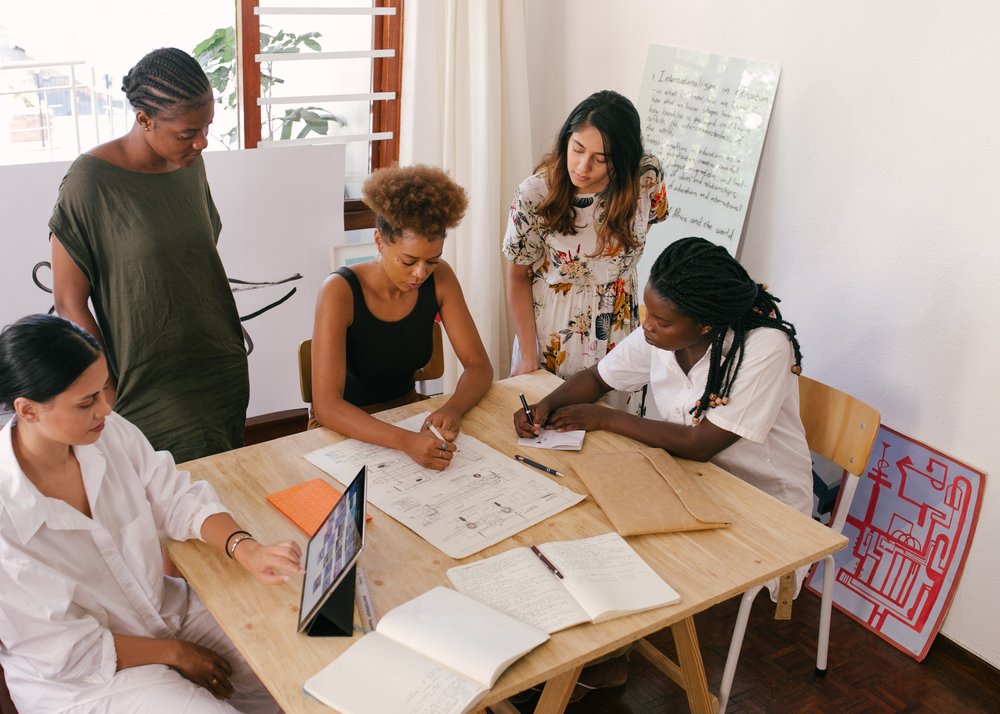
Every CEO wants a learning organization. This article explains what a learning organization is, why it is beneficial and how to become one.
What is a learning organization
A learning organization is any organization that has a structured process in place to constantly make knowledge in people’s heads available to the organization.
HUMAN CAPITAL
Knowledge in people’s heads, so-called human capital, is great but risky. You want a team that knows many things. On the other hand, you don’t want to be independent on individual players.
Imagine one of your most knowledgeable people leaving and taking all of their know-how with them.

STRUCTURAL CAPITAL
This scenario is the most obvious reason why you want to transfer human capital into structural capital. Structural capital is the know-how that your organization holds. And that’s accessible by everyone.
COMPANY GROWTH
Beyond that obvious use case, there’s a more important one as your company grows. While you diversify roles and responsibilities, you also add multiple people that work in the same field.
Additionally, people from one part of the company need information about a subject that has been worked on in another part of the company.
People’s scope of work becomes more narrow, but the need for information stays fairly broad. That gap has to be bridged.
A simple example is your company’s strategy. While you’re small, it might suffice to have it in your head, as you grow you need to constantly share it with your team. At scale, you need to make it available to everyone with means other than your own communication.

WHY A LEARNING ORGANIZATION IS AWESOME
The benefits of a learning organization are:
- Built-in continuous improvement. If know-how is constantly added to the organization’s collective memory, it can improve effortlessly over time
- High autonomy. If the organization is self-learning, there’s no external driver necessary to push trough process improvements etc.
- Quicker adaption to changing markets or customer behavior. If your organization has ways of extracting knowledge from all parts of the company, you’ll also be quicker to react to customer demands.
Now that we have established that you want a learning organization, let’s look at what’s necessary to build one.
We want to focus on four different dimensions:
- Acquiring knowledge
- Storing knowledge
- Sharing knowledge
- Using knowledge
Acquiring knowledge
In order for an organization to learn, there needs to be learning on an individual level first. The organization itself has no way of learning new things. New knowledge is always first acquired by humans.
LEARNING THROUGH FAILURE
The best way to learn is through failure. Not only is the learning effect generated in a natural, non-theoretical environment, but it’s also tied to strong emotions. Nobody likes to fail. So the learning is very deep.
A good examples is really every process improvement. You see that something doesn’t work. And you change it. You have learned that a certain thing is done best in a specific way.
This way of learning happens constantly and automatically.

LEARNING THROUGH EXPERIMENTATION
You might test a new product or offering in an experimental setting. Usually you develop a hypothesis and then try to falsify it. Alternatively, you test two different versions of something agains each other to understand to which one the market responds better.
LEARNING BY DESIGN
This type of learning happens when someone actively designs something. A new process, a new product or a new template. It’s not learning in the classical sense, but it adds knowlegde to the human capital of your company.

LEARNING THROUGH TRAINING
Someone in your team takes an outside training and learns something new. Organizations at scale often organize this form of learning in a comprehensive learning and development (L&D) strategy.
LEARNING THROUGH RESEARCH AND ANALSYS
Imagine an employee does market research or a competitor analysis. This way she acquires additional knowhow.
A CULTURE OF LEARNING
Beyond the above, one thing is the fundamental prerequisite for a learning organization: A culture that fosters learning! If individuals don’t feel the above methods of learning are accepted – or better rewarded – by the organization, then no learning will happen.
Not on an individual level and not on an organizational level.
Storing knowledge
Once your team has acquired knowledge, the next step towards a learning organization is to store it. Let’s look at the different methods of storing knowledge.
HUMAN MEMORY
Despite the fact that human memory is not enough for a learning organization, it still is a vital part of it. A learning mindset will help people to identify new information as such and remember it.

COMPANY WIKIS AND OTHER INFORMATION SYSTEMS
Acquired knowlegde can be stored in a company wikis. Wikis are central repositories that host a variety of different data types. Examples are policies, procdures, how-tos, FAQs etc. Make sure there are clear update and editing guidelines in place. And first and foremost. Updating has to be fun. Or at least easy.
DOCUMENTS AND DATABASES
Specific types of knowledge might best be stored in a document (think a case study) or a database (think a new potential lead).
INFORMAL SYSTEMS
Things your empoyees learn might be implicitely stored informal systems such as habits or other practices. Imagine one of your early customers giving you a strong feedback that always comes back because he likes your customer service.
What you learned through that transaction might find it’s way into how you – implicitely – decide to treat your customers. And sets you up for successful customer support in the future.
MAKE STORING KNOWLEDGE SECOND NATURE
Regardless of the method of storing, you have to implement and support the process of storing knowlegde. One of our clients calls this the documentation-first culture. Every bit of information that you search and can’t find, you document yourself.
You have to constantly push employees to create structural capital in the form of knowledge that’s accessible by everyone.
SHARING KNOWLEDGE
Storing knowledge is not enough. You have to also make it available. Or even better, actively share it.

INDIVIDUAL COMMUNICATION
A culture of supporting each other will help in making human capital available to more and more people. If everyone know they can ask their peers for help, than a great exchange will happen.
Tools like buddy systems, mentoring relationships, office hours or ask-me-anything-sessions are formalized versions of the same idea.
INTERNAL TRAINING
Once someone holds a training internally, you’re sharing knowledge and building skill. An internal training could be about
- communicating your strategy
- a new process or tool the team needs to use or
- simply a rerun of an external training someone has taken.
COMPANY WIKIS AND INFORMATION SYSTEMS
Again, you ask? Wasn’t that part of Storing Knowledge. Yes. But even more important than storing knowledge in the right place is to make it accessible. That means you have to design your information systems with a focus on the user and the use-case.

Using knowledge
Up to this point, you have acquired, stored and shared what you learned. But that’s not enough to become a learning organization.
Your team has to actually use the structural capital in their day-to-day. There’s one ingredient that’s most important.
AUTONOMY
You have to give your team autonomy for them to use information. And that in turn will allow them to acquire knowledge. Autonomy can be created explicitly. A good example for this is budgeting. You allocate funds to a function and let the people in that function decide how to use it.
Another example for explicit autonomy are decision-making thresholds for customer support. Up to a certain value of a case, the support rep can decide how to handle the case, inclunding a refund.
Autonomy can also come in implicit forms. The amount of slack that you give your teams. The way you set goals vs. micro-managing. A culture that accepts failure also supports autonomy.
Culture and infrastructure
The best way to build a learning organization is to build infrastructure as discussed. That in turn will create a culture of learning.
And as always, you as the leader must walk the talk. If you and the management hold back information instead of sharing it, why should your team do it differently.
Start today to lear by example. I wish you lots of success.

